Main Story
In this together
Sustainability dominated discussions at the International Air Transport Association’s 80th Annual General Meeting and World Air Transport Summit last month. There is progress towards net zero carbon emissions by 2050, but major hurdles must be overcome for airlines to meet the target. Associate editor and chief correspondent, Tom Ballantyne, witnessed the debate first hand at the Dubai global airline gathering.
June 1st 2024
A touch of optimism, but a fair amount of caution. And a renewal of a plea for governments to do more. Read More » These were the messages International Air Transport Association (IATA) director general, Willie Walsh, delivered about Sustainable Aviation Fuel (SAF) in his State of the Industry address to delegates at the lobby group’s June AGM in Dubai.
IATA projects a tripling of SAF production this year, to 1.9 billion liters (1.5 million tonnes), and is on track to reach that target, Walsh said at the Emirates Airline hosted industry summit. It will account for 0.53% of aviation’s fuel needs in 2024, IATA has calculated.
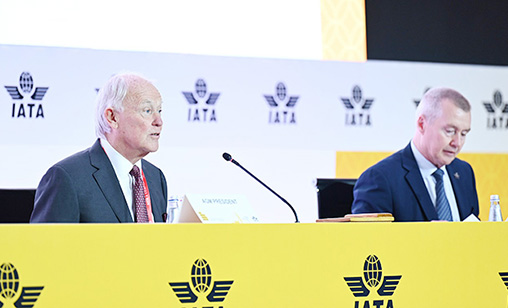 |
“SAF will provide about 65% of the mitigation needed for airlines to achieve net zero carbon emissions by 2050. So, the expected tripling of SAF production in 2024 from 2023 is encouraging. We still have a long way to go, but the direction of exponential increases is starting to come into focus,” Walsh said.
He added interest in SAF is increasing and there is plenty of potential. “But the concrete plans we have seen so far are far from sufficient. Governments have set clear expectations for aviation to achieve a 5% CO₂ emissions reduction from SAF by 2030 and to be net zero carbon emissions by 2050,” he said. “They need to implement policies to ensure airlines can actually purchase SAF in the required quantities.”
Approximately 140 renewable fuel projects capable of manufacturing SAF are planned to be in production by 2030. “If all of these proceed as announced, total renewable fuel production capacity could reach 51 million tonnes by 2030, with production capacity spread across most regions,” Walsh said.
The good news is a recent IATA survey revealed significant public backing for SAF. About 86% of travelers agreed governments should provide incentives for airlines to use SAF. In addition, the vast majority of air passengers agree (also 86%) that leading oil corporations should prioritize SAF production.
IATA is determined to keep pushing on the SAF front. “Considering SAF production will equal slightly more than 0.5% of our fuel needs this year, achieving a 5% emissions reduction through SAF by 2030, a target agreed by ICAO, is very ambitious,” Walsh said. “Having agreed that target—and please it is important to remember it is a governments target not ours—we therefore expect governments to help make it possible.
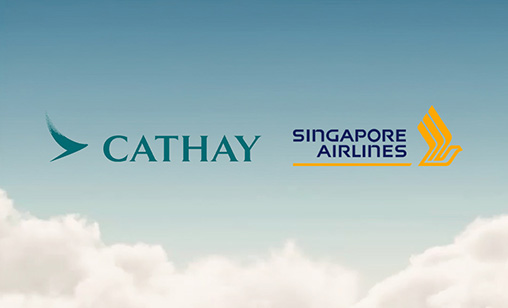 |
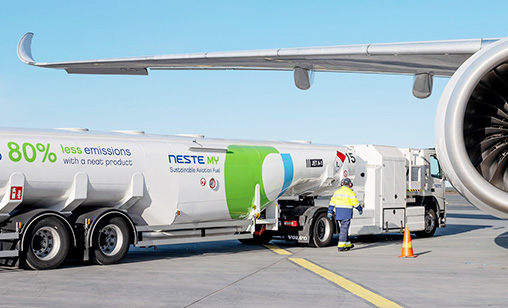 |
“To be blunt, governments must deliver concrete measures to facilitate the exponential ramp-up of SAF they are advocating while not forgetting the other de-carbonization measures needed.”
Lobbying for government action on SAF has been taken up by Asia-Pacific airlines, which have invested billions of dollars in sustainability measures, including ordering hundreds of new, fuel efficient aircraft and investments in solar power and tree planting.
On the sidelines of the IATA AGM, Hong Kong’s Cathay Group and Singapore Airlines (SIA) signed a Memorandum of Understanding (MoU) to collaborate on a range of sustainability initiatives. The collective effort is advocating the development and use of SAF in the region, a critical decarbonization lever for the sector, and the sharing of best practices to boost sustainability performance. Cathay Group Chief Executive, Ronald Lam, and SIA CEO, Goh Choon Phong, signed the MoU.
The agreement focuses on two key areas. Firstly, Cathay Group and SIA will promote SAF use in the Asia-Pacific by raising public awareness about its critical role in decarbonizing aviation, advocate supportive policies of SAF and promote the establishment of a standard global accounting and reporting framework to ensure the transparency and verifiability of emission reductions from SAF use.
Both airlines will explore potential opportunities for joint procurement of SAF at selected locations, aiming to support the wider adoption of SAF by airlines.
The second area of focus will be the exchange of best practices to reduce single-use plastics, minimize waste and improve energy efficiency at ground and cargo operations.
“As part of our collaborative ethos of ‘Greener Together’, we actively seek like-minded industry leaders for strategic partnerships in transitioning to sustainable aviation. Our collaboration with Singapore Airlines aims to accelerate and support the development of the SAF supply chain in the region, fostering a reliable SAF ecosystem to achieve the industry’s long-term de-carbonization goals,” Lam said. “Cathay Group was one of the first airlines in Asia to set a target of 10% SAF for total fuel consumption by 2030. We also are undertaking a multi-pronged approach to contribute to the industry’s transition to a greener future.”
Goh said SIA is committed to embedding sustainability in all aspects of its operations. “At the same time, we recognize we cannot achieve our targets alone. Our partnership with Cathay signifies our mutual ambition to enhance collaboration in sustainability initiatives in the Asia-Pacific,” he said. “Together, we are helping to set the foundation for a more sustainable aviation industry and ensure future generations continue to reap the benefits of air travel.”
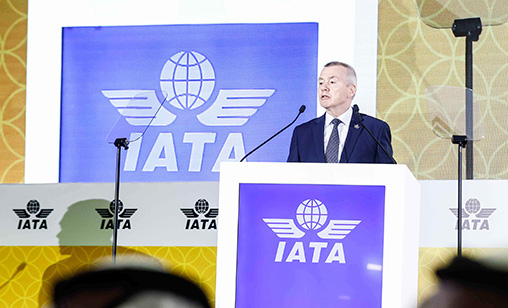 |
| 'Governments can facilitate technical solutions with accelerated approvals for diverse feed stocks and production methodologies as well as co-processing renewable feed stocks in crude oil plants. No one policy or strategy will get us to the needed levels. But by using a combination of all potential policy measures, producing sufficient quantities of SAF is absolutely possible' |
| Willie Walsh IATA director general |
Air cargo is not being ignored when it comes to sustainability. At the AGM, IATA and the Smart Freight Centre (SFC) announced a partnership to provide consistent and transparent CO₂ emissions calculations for air cargo shipments.
The two organizations will focus on developing the cargo component of IATA’s CO₂ Connect offering, which successfully launched its passenger version in 2022. The IATA CO₂ Connect platform uses primary industry data to power highly accurate carbon calculations.
IATA’s collaboration with the SFC Clean Air Transport Program is intended to promote a common methodology in CO₂ emission calculations and ensure accurate and consistent CO₂ calculations are distributed to the industry’s biggest shippers and freight forwarders by supporting them with pre-shipment and reporting purposes.
“Our partnership with the Smart Freight Center will help accelerate the development of CO₂ Connect for air cargo as the most authoritative tool for carbon calculations. This is important for airlines, shippers and their customers who need accurate calculations based on real data to support their contributions to global de-carbonization efforts,” IATA senior vice president for commercial products & services, Frederic Leger, said.
Also at the Dubai AGM, IATA launched IATA FuelIS, an advanced analytics solution to optimize airline fuel consumption using aggregated and anonymized flight and fuel data.
“IATA FuelIS is a robust analytical tool for airlines to make strategic and operational decisions to optimize fuel consumption, reduce fuel costs and improve environmental performance. Enabling airlines to benchmark their fuel performance against aggregated industry data, can show them where they excel and where they need to take action,” IATA senior vice president operations, safety and security,” Nick Careen, said.
As SAF is the most critical part target, Walsh said there exists several potential solutions to accelerate aviation’s efforts to reach net zero emissions by 2050. IATA is placing emphasis on measures to reach the critical SAF quantities, including diversifying feed stocks and co-processing, where existing refineries can be used to co-process up to 5% of approved renewable feed stocks alongside crude oil streams.
“This solution can be implemented quickly and materially expand SAF production. However, policies must be put in place urgently to facilitate consistent life-cycle assessments,” Walsh said.
“Also, there must incentives to improve the output mix at renewable fuel facilities. “The current renewable fuel facilities are designed to maximize diesel production and often benefit from incentives in addition to long-standing demand from road transportation. As road transport transitions to electrification, policies should be established to shift production towards the long-term SAF needs of air transport. Incentives for SAF production will facilitate the renewable diesel-SAF switch, which requires minimal modifications at existing stand-alone renewable fuel facilities.”
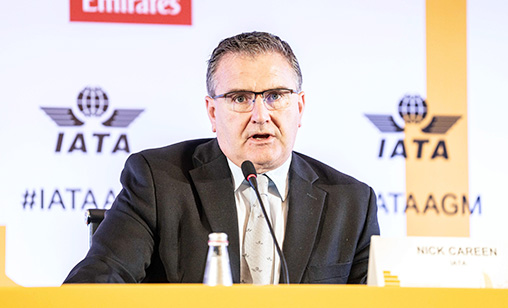 |
One area of concern is the imposition of SAF mandates. “Some governments have mandated airlines to purchase SAF in amounts that do not exist. And where they have mandated SAF production, there are no mechanisms to protect airlines from bearing the cost of supplier penalties for shortfalls,” Walsh said.
“We witnessed this in France where fuel suppliers are happy to accept penalties for their failure to supply the SAF mandate. They simply exercise their monopoly power and pass those costs on to airlines. This must be stopped.
“Aviation has a common commitment with governments is to decarbonize by 2050. The challenge is for governments to deliver enabling policies. We have many possible pathways to net zero. De-carbonizing aviation faces many challenges. We also know de-carbonizing aviation is our license to do business. And, most importantly, we know de-carbonizing aviation is absolutely possible,” Walsh said.
DANIEL RAY says:
August 20th 2024 01:01pm